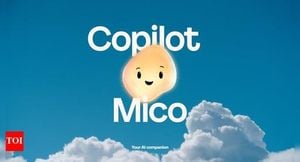Investigations reveal how perceptual, cognitive, and social dimensions shape aesthetic preferences for soft drink packaging using the unified model of aesthetics.
Recent research conducted by scholars at Universiti Putra Malaysia has explored the nuanced aesthetic preferences of consumers concerning soft drink packaging. The study, based on the unified model of aesthetics (UMA), delves deeply—perhaps more thoroughly than previous inquiries—into how perceptual, cognitive, and social factors interact to influence what consumers deem visually appealing.
Aesthetics play an increasingly pivotal role in consumers’ purchasing behaviors, particularly within fast-moving consumer goods like soft drinks. According to the findings, safety, conveyed through aesthetic features like unity and typicality, appears to reign supreme. "People gravitate toward safety over accomplishment and connectedness, typicality, and unity are the main determinants of aesthetic pleasure," the authors noted.
Exploring these dimensions, the research emerged from the acknowledgment of existing literature gaps, particularly surrounding FMCG packaging designs—areas where aesthetics may significantly impact selections. Traditional perspectives largely focused on long-lasting and high-end products, frequently overlooking the role of aesthetics in everyday items like beverages.
Two studies were executed, utilizing 214 participants from China for the first phase and 159 individuals for the second. Both groups evaluated various soft drink packaging designs featuring distinct attributes materialized through visual imagery. Using a 7-point Likert scale, respondents rated the designs based on unity, variety, typicality, novelty, connectedness, and autonomy.
Study 1 underscored how strong aesthetic pleasure aligns with designs exhibiting greater unity, again reflecting the findings of established aesthetic principles. The survey indicated, “Connectedness had the most significant impact on aesthetic pleasure, followed by unity and typicality.” This suggests design decisions around soft drink packaging could benefit from emphasizing inclusive and cohesive designs, appealing to consumers’ need for reliability.
Building upon these outcomes, Study 2 incorporated situational contexts to gauge whether packaging aesthetics might shift based on environmental variables. Participants were prompted to contemplate their aesthetic preferences during scenarios like attending very formal meetings versus enjoying casual gatherings with friends. Results revealed significant differences, showcasing how consumer preferences can fluctuate based on external inputs.
For those anticipating formal occasions, designs showcasing unity and typicality were favored, boasting the highest scores under such conditions. Conversely, more relaxed gatherings led consumers toward novel and varied design attributes. “Participants wanted to seek a sense of accomplishment through novel products,” the researchers claimed, hinting at the complex interplay between safety and achievement within product design evaluations.
This multilayered analysis signifies potential pathways for marketers and designers to create more appealing product packages. By leveraging insights from the UMA framework, professionals can craft packaging aesthetics not only to attract attention but also to resonate with the consumers’ inherent desires for both safety and self-expression.
Overall, this research does not merely fill academic gaps but offers actionable insights for the practical realms of design and marketing, emphasizing how interconnected perceptions shape our everyday interactions with consumer products. The systematic exploration of aesthetic preferences surrounding soft drink packaging design substantiates the relevancy of integrated factors across perceptual, cognitive, and social dimensions.
Anticipated areas for future research include exploring the synergy between multi-sensory experiences and aesthetic preferences, as well as delving more deeply at the intersection of consumer psychology and packaging design.
Through their comprehensive approach, the authors contribute pivotal findings to the discourse on aesthetic values, reiteratively stressing the delicate balance between safety and the pursuit of novel experiences. Empowering product designers to enact this balance could lead to packaging strategies yielding broader consumer appeal, resulting not only from beauty but from the ability to meet human desires on multiple levels.



